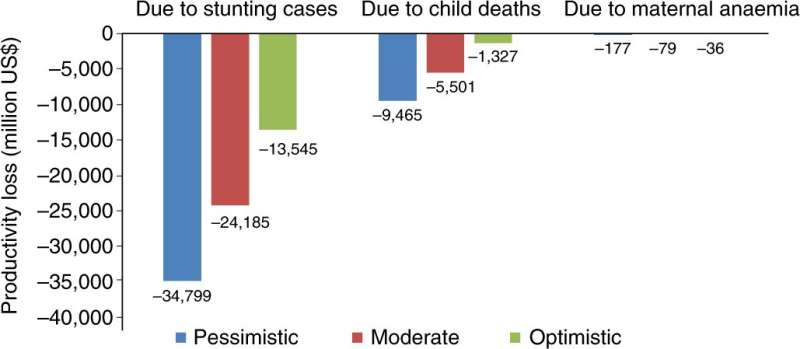
An international team of researchers has found via modeling that the COVID-19 pandemic is impacting food distribution networks to the point that billions of mothers and their children living in at-risk places face undernutrition. In their paper published in the journal Nature Food, the group describes using economic indicators and early insights into food and health system disruptions to create their models and what they indicated.
In addition to the immediate health crises posed by COVID-19, the pandemic has also damaged food production systems. From farmers and packagers to sellers and restauranters, the pandemic has disrupted many of the processes involved in providing food to the people of the world. And while this damage has been reflected in rising prices at grocery stores in well-to-do countries, people living in the developing world who are bearing the brunt of the problem. In this new effort, the researchers sought to put the food crises into perspective by creating models that show how many people (mothers and their children) in such countries will move, or have moved from being able to obtain enough food for themselves to becoming undernourished.
To create their model, the researchers used economic data from countries around the world, such as GDP and poverty rate changes that have occurred prior to and during the pandemic. They also added data gathered over the past year regarding increases in undernutrition and health care statistics. After adding all their data, they used the model to represent undernutrition rates around the globe for the years 2020 to 2022.
The model indicated that the pandemic is having a profound impact on a large number of people around the world. They found, for example, that approximately 3 billion people could find themselves unable to obtain enough food to meet their nutritional needs. They also found that more than 9 million children could become underweight and that as many as 168,000 of them could die. They also found that over 2 million mothers of children could become anemic and could also experience abnormal body weight. The model also estimated productivity losses due to stunting and other health issues of children experiencing undernutrition, at nearly $30 billion.
Source: Read Full Article
